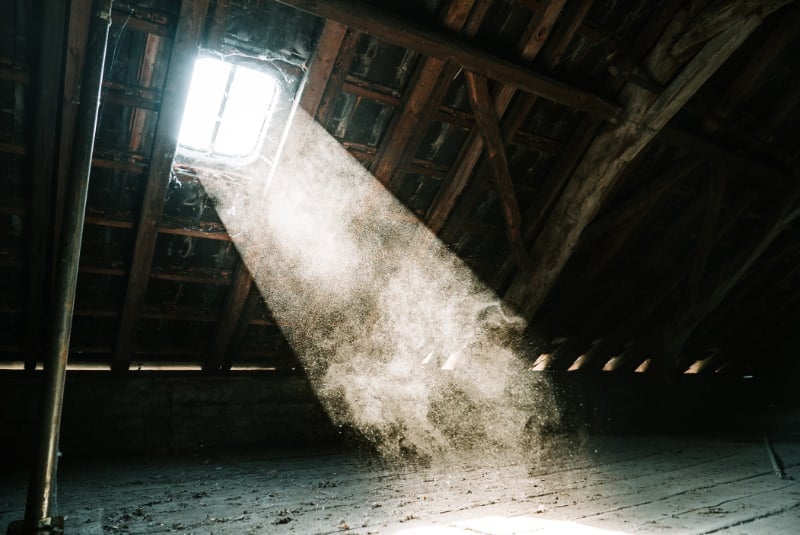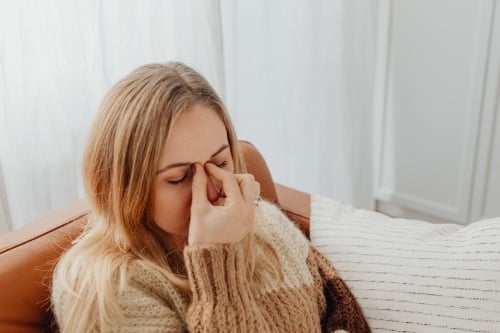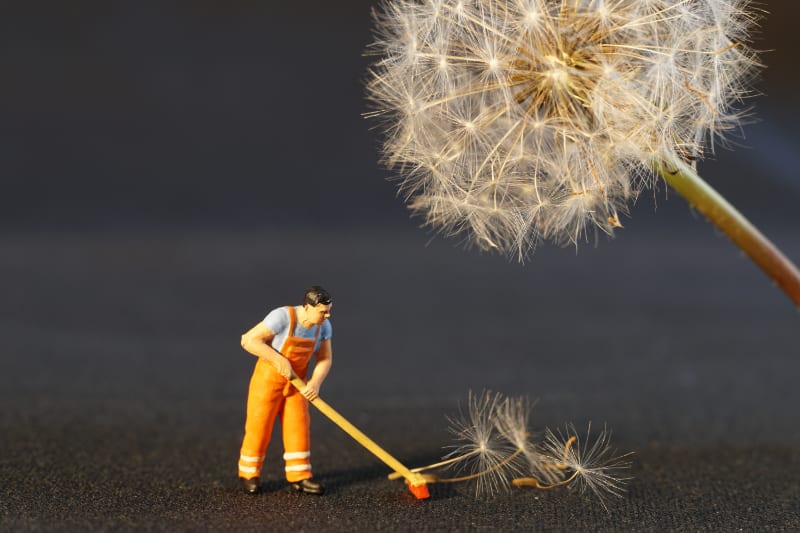Allergic rhinitis, commonly known as hayfever, is a common condition that affects millions of individuals worldwide. Although various conventional treatments can provide relief for allergic rhinitis symptoms, these treatments often come with adverse side effects, may not be suitable for long-term use, and can be costly. As a result, many individuals are turning to alternative therapies, such as acupuncture, to manage their allergic rhinitis symptoms.
Why does my body react this way?
Have you ever wondered why your body reacts in a certain way when exposed to foreign particles like pollen or dust? Allergic rhinitis, commonly known as hay fever, is an allergic reaction that occurs in the nasal passages when the immune system mistakenly identifies harmless particles as harmful. This triggers a series of events that lead to the manifestation of allergic rhinitis symptoms.
When foreign particles like pollen or dust enter the body, they can trigger an immune response. However, in individuals with allergic rhinitis, the immune system identifies these particles as harmful and releases a chemical called histamine to defend the body against them. Histamine is responsible for the inflammatory and swelling response that causes the typical symptoms of allergic rhinitis such as a runny nose, itchy eyes, and sneezing.
Unlike the cold or flu, allergic rhinitis is not caused by a virus and is not contagious. Symptoms, which include nasal obstruction, itching, sneezing, and discharge, can be similar to those of a cold or flu, but they typically last longer and are not accompanied by a fever. Additionally, the symptoms of allergic rhinitis can often be triggered by specific allergens, whereas cold and flu symptoms can occur at any time of the year.
Common Triggers and Symptoms:

Allergic rhinitis can be triggered by different types of allergens such as pollen, dust mites, pet dander, and molds, among others. The symptoms that typically occur include inflammation and swelling of the nasal mucosa, causing nasal congestion and post-nasal drip. Sneezing frequently, a runny nose, and itching eyes are also common symptoms. Other symptoms may include headache, a sore throat, fatigue, or difficulty sleeping.
Risk Factors:
Certain risk factors increase a person’s susceptibility to allergic rhinitis. For instance, a family history of allergies, exposure to environmental pollutants, or tobacco smoke, living in a highly urbanized area, and having a weak immune system. Additionally, age and gender can also play a role. Children and young adults are more likely to develop allergic rhinitis than older adults, and males are more susceptible than females.
Common presentations of allergic rhinitis
One of the most common symptoms of allergic rhinitis is a stuffy or runny nose. Individuals with this condition may experience nasal congestion or discharge, which can make it difficult to breathe. Additionally, the nose and eyes may become itchy, which can cause discomfort and irritation.
Sneezing is another common symptom of allergic rhinitis. It is a reflex reaction to an irritant that helps to expel the irritant from the body. Those with allergic rhinitis may sneeze frequently and uncontrollably, which can be disruptive and embarrassing.
Allergic rhinitis can also cause pressure in the face and headaches. The inflammation in the nasal passages can cause pain and discomfort, which can radiate upward into the eyes and forehead. As a result, individuals with allergic rhinitis may experience chronic headaches that can interfere with work, school, and other daily activities.
Other symptoms may also manifest, such as fatigue, decreased concentration, poor focus and hand-eye coordination, irritability, and sleep disorders. These symptoms can significantly affect an individual’s quality of life, making it difficult to function on a day-to-day basis.

What is the prevalence of allergic rhinitis in Australia?
Allergic rhinitis is a common condition in Australia, affecting around one in five individuals. According to the Australasian Society of Clinical Immunology and Allergy (ASCIA), the prevalence of allergic rhinitis is increasing, and it is estimated that approximately 40% of the population in Australia will experience this condition by 2050. It is estimated that the condition costs the Australian healthcare system over $7 billion annually.
Allergic rhinitis affects individuals from different age groups, ethnicities, and socio-economic backgrounds. Children are more likely to develop allergic rhinitis than adults, and it is more common in males than females. Studies have shown that the prevalence of allergic rhinitis is higher in urban areas than in rural areas. This may be due to higher levels of air pollution and exposure to allergens such as pollen, dust, and animal dander in urban areas.
Standard treatment for allergic rhinitis
Conventional treatment options for allergic rhinitis include over-the-counter medications such as antihistamines and corticosteroids, as well as immunotherapy and allergy shots. These treatments can be effective for some people, but they do come with potential side effects that may deter patients from using them consistently.
Antihistamines are commonly used to treat allergic rhinitis. They work by blocking the effects of histamine, a chemical released by the immune system in response to allergens. While antihistamines can provide relief from symptoms such as nasal itching and congestion, they can also cause drowsiness and dryness in the mouth and throat.
Corticosteroids, which can be taken in pill form or administered nasally, reduce inflammation in the nasal passages. They are effective at reducing symptoms such as congestion and post-nasal drip, but they can also cause side effects such as nasal irritation and nosebleeds.
Immunotherapy, also known as allergy shots, involves injecting small amounts of allergens into the body over a period of time. This helps the immune system become desensitized to the allergen, reducing the severity of allergic reactions. However, immunotherapy can be time-consuming and requires regular visits to a healthcare provider. It can also cause side effects such as itching or swelling at the injection site.
It’s important to note that conventional treatments may not work for everyone, and some patients may prefer to explore alternative therapies such as acupuncture. In fact, a study published in the Annals of Allergy, Asthma & Immunology found that patients who complemented conventional treatment with acupuncture reported significant improvements in their quality of life.
How do you treat allergic rhinitis naturally
While there are conventional treatments available, such as drug therapy, individuals seek the holistic approaches of alternative medicine to managing allergic rhinitis.
Avoid allergens
One effective way to manage allergic rhinitis symptoms is to reduce exposure to allergens. This can include avoiding outdoor activities during high pollen days, keeping windows and doors closed, and investing in air purifiers to filter out allergens. Regularly washing bedding and clothing can also help reduce exposure to allergens. By reducing exposure to allergens, individuals can potentially reduce the severity of their allergic rhinitis symptoms and improve their overall quality of life.
Flush out the pollen
Flushing out allergens is key to reducing symptoms and improving quality of life. Pollen can irritate and inflame the nose, but flushing it out can help. Saline nasal sprays clear pollen from the nose by hydrating and cleansing the nasal passages, reducing congestion, inflammation, and itching.Eye drops remove pollen particles, reducing itching and improving eye comfort.
Apply a heat bag
A heat bag is a natural remedy. Use a clean heat bag to reduce allergy symptoms. Apply heat to the face for best results. Applying heat can reduce inflammation and alleviate hay fever symptoms in the nose and cheeks by opening up blood vessels and allowing sinuses drain better.
Use heat, not cold, to treat allergic rhinitis as it helps blood supply and prevents histamine reaction. Heat bag is better than ice pack for reducing inflammation and congestion. Heat bags can relieve allergic rhinitis discomfort quickly and easily without medication.
Spring Clean
Spring cleaning can help reduce dust and allergens that worsen hay fever. Try these steps.

Clean surfaces well, especially under the bed where dust gathers. Regular cleaning reduces allergen levels by 90%. Spring Clean to get rid of dust-harboring items like old books and cardboard boxes.
To keep a dust-free bedroom, it’s important to frequently washing your sheets and pillowcases at 60°C or higher. Consider also buying mattress and pillow covers. Use a damp cloth and HEPA vacuum to reduce allergens in your home.
Spring cleaning can help reduce hay fever symptoms by removing allergens from the home environment.
Acupuncture as an alternative therapy
Acupuncture is a form of Traditional Chinese Medicine that has been used for centuries to treat various conditions. It involves inserting thin needles into specific points on the body to stimulate energy flow and promote healing.
Herbal medicine
Herbal medicine is another alternative therapy that has been used for centuries to treat various ailments, including allergic rhinitis. Certain herbs, such as butterbur, nettle, and ginkgo biloba, contain anti-inflammatory and antihistamine properties that can help reduce symptoms. However, it is essential to consult with a healthcare professional before taking any herbal supplement to avoid adverse reactions or drug interactions.
What acupuncture points are used for allergic rhinitis
Allergic rhinitis is uncomfortable and disruptive. TCM is a holistic approach to treating this condition. Acupuncture and herbal medicine can identify causes and provide treatment. TCM recognises individual symptoms and tailors treatment accordingly. Acupuncture is an effective solution for reducing symptoms.
By targeting the inner and outer tips of your eyebrows, specifically Bladder 2, YuYao, and San Jiao 23 points, you can stimulate your body’s Qi flow and ease those pesky rhinitis symptoms. Beijing University of Chinese Medicine confirms that the eyebrow acupuncture point is a game changer for improving the flow of energy throughout your entire body, especially in your frontal sinuses.
The TaiYang acupuncture points are located at the temples, just behind the outer corners of your eyes. To find them, simply start with your index fingers above your inner eyebrows and move outwards towards your temples until you feel a slight dip. Apply gentle pressure to both points and voila! You’ll be well on your way to headache relief and better immunity against pesky wind-induced allergies. Give it a try and feel the magic!
Is acupuncture good for allergic rhinitis
Allergic rhinitis, commonly known as hay fever, affects around 400 million people worldwide. Symptoms include nasal congestion, itching and discharge, as well as other associated conditions such as asthma. While conventional treatments may provide temporary relief, they often have adverse side-effects. Therefore, many people have turned to alternative therapies such as acupuncture for a more holistic and long-term approach. Clinical studies have shown promising results for the use of acupuncture and chinese herbal medicine as an effective treatment for allergic rhinitis.
How does acupuncture stop allergies
Studies have shown that the effects of acupuncture include a positive impact on the immune system’s reaction to allergens. A 2015 review discovered that acupuncture treatment may decrease the levels of specific inflammatory markers, which are often high in individuals with allergic rhinitis.
Acupuncture can reduce pain and inflammation from allergic rhinitis by regulating neurotransmitter release and improving immune function. Acupuncture can improve blood and lymph flow, which helps the body defend against toxins and alleviate allergic rhinitis symptoms. Acupuncture treats the root cause of allergic rhinitis, not just the symptoms.
Acupuncture for allergies reviews
Systematic reviews and meta-analysis of clinical trials into the efficacy and safety of acupuncture conducted in 2014, 2010, 2022 have all concluded that acupuncture helps to reduce the symptoms of allergic rhinitis. A 2020 study showed that all types of acupuncture were better than sham acupuncture for improving nasal symptoms and improvements in quality of life questionnaire. Trials of acupuncture have also shown that it can improve symptoms, quality of life, reduce medication use, with a secondary outcome of increased patient satisfaction according to a 2022 systematic review and meta analysis. A range of systematic reviews and meta-analysis find that Chinese herbal medicine may be more effective for allergic rhinitis than Western medication in children and adults with a low risk profile. Acupuncture is cost-effective for treating conditions such as allergic rhinitis, according to multiple studies.
How many sessions of acupuncture do you need for allergic rhinitis?
Research suggests that for effective reduction of allergic rhinitis symptoms, an individual may require around 20 to 30 acupuncture sessions over a period of 3 to 4 months. However, the recommended number of sessions may vary depending on the severity of the condition and the person’s individual response.
Get a professional evaluation before starting acupuncture. A licensed acupuncturist will assess if it’s safe for you and create a personalised treatment plan.
Acupuncture near you for allergic rhinitis
At Dantian Health Chinese Medicine clinic in Melbourne, we offer professional acupuncture services for the treatment of allergic rhinitis. Our licensed acupuncturists tailor each treatment plan to the individual’s needs and work to reduce symptoms with a tailored approach. If you’re ready to try acupuncture for your allergic rhinitis symptoms, contact Dantian Health acupuncture clinic to schedule an appointment.
Dantian Health – Melbourne Acupuncture and Chinese Medicine Clinic
Reclaim your health and restore vitality with responsive, holistic healthcare
Citations:
- https://pubmed.ncbi.nlm.nih.gov/35462555/
- https://eurjmedres.biomedcentral.com/articles/10.1186/s40001-022-00682-3
- https://pubmed.ncbi.nlm.nih.gov/25590322/
- https://cmjournal.biomedcentral.com/articles/10.1186/s13020-020-00389-9
- https://www.annallergy.org/article/S1081-1206%2810%2960330-4/abstract
- https://www.sciencedirect.com/science/article/abs/pii/S2095496422000929
- https://pubmed.ncbi.nlm.nih.gov/33533107/
- https://onlinelibrary.wiley.com/doi/full/10.1002/ptr.7037
- https://pubmed.ncbi.nlm.nih.gov/35257842/
- https://www.sciencedirect.com/science/article/pii/S0378874122002070
- https://journals.sagepub.com/doi/10.1177/0300060518786905



